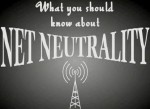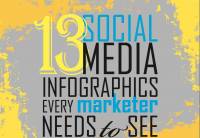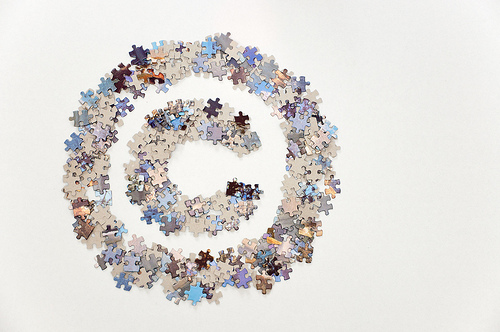Last month, I wrote about what I consider to be the most important public policy issue affecting the arts/technology community, the issue of net neutrality. Since then, a wave of new developments have shifted the playing field and ratcheted up the fight over what is quickly becoming one of the most contentious policy issues in all of Washington. With the new FCC regulations slated to go into effect this Sunday, the legal and political wrangling over the issue is far from over, and the very future of the Internet as we know it is at stake.
First, a quick overview: the issue of net neutrality has received a fair amount of coverage recently because a new set of regulations passed by the Federal Communications Commission (FCC) last December are set to go into effect this Sunday, November 20th. The regulations primarily do three things: they prohibit broadband providers from blocking lawful web traffic; require a greater deal of transparency from broadband providers regarding their network practices; and most importantly, require broadband providers to not discriminate in transmitting lawful network traffic over consumers’ internet service.
arts/technology community, the issue of net neutrality. Since then, a wave of new developments have shifted the playing field and ratcheted up the fight over what is quickly becoming one of the most contentious policy issues in all of Washington. With the new FCC regulations slated to go into effect this Sunday, the legal and political wrangling over the issue is far from over, and the very future of the Internet as we know it is at stake.
First, a quick overview: the issue of net neutrality has received a fair amount of coverage recently because a new set of regulations passed by the Federal Communications Commission (FCC) last December are set to go into effect this Sunday, November 20th. The regulations primarily do three things: they prohibit broadband providers from blocking lawful web traffic; require a greater deal of transparency from broadband providers regarding their network practices; and most importantly, require broadband providers to not discriminate in transmitting lawful network traffic over consumers’ internet service.
While not perfect, these regulations are an important step to ensure that the concept of the “open Internet,” or the idea that all internet traffic is treated equally, continues going forward. Simply, it would preserve open Internet access for consumers, and not allow telecommunications companies to discriminate certain types of data as they see fit.
With the new regulations slated to go into effect shortly, Republicans in Congress have sought to overturn the rules, arguing that they go too far and that new government regulations are not necessary. This past Thursday, the Senate failed to round up the votes necessary to pass a resolution overturning the rules, failing on a party line vote of 52-46, with Democrats voting in the majority to stop the bill from going forward. The Republican-controlled House voted in April on a similar bill, which passed by a vote of 240 to 179.
The opposition in Congress stated that they also believe in the concept of an “open Internet,” but felt that such regulations were better written by Congress themselves and not the FCC.
Supporters of the new regulations, including the FCC, claim that the rules bring a degree of certainty to the internet community. In a statement, the FCC stated that “any effort to disrupt or unsettle that certainty, which has been widely supported by industry, will only undermine innovation and investment in this space.”
Even if the Senate had passed the legislation, President Obama had vowed to veto the bill, ensuring that any legislative efforts to roll back the regulations will fall short of success at least through the 2012 election.
The real immediate fight, however, over the regulations will be fought in court. Several telecommunications companies, most notably Verizon, have pending lawsuits seeking to nullify the regulations, claiming the federal government and the FCC do not have the authority to exercise regulatory power over the Internet. Attempts by the FCC to regulate the internet in the past have failed in the courts, so there is legitimate concern that the current case may meet the same fate.
In addition to concerns over potential content discrimination, there are other areas where telecommunication companies may seek to change their business practices if the regulations do not go into effect. The most common concerns are over higher premiums being charged for faster data speeds, or deliberately slowing down speeds for specific websites or services that may compete with the firm providing the internet access.
As I said last month, the issue of net neutrality impacts all communities, and many of the innovative and inspiring new art works and technologies we have highlighted here on the blog in recent months stand to be impacted if efforts to weaken the regulations are successful. Innovation is best achieved when entrepreneurs, artists and managers have the freedom to use technology to share their art with the world, and the openness of the Internet since its inception has facilitated countless new art forms and inspired a new generation of artists. It would be a shame to see that kind of progress stifled at the hands of Congress or the court system.
After the defeat of the Senate bill, the White House released a statement, saying that “it would be ill-advised to threaten the very foundations of innovation in the Internet economy and the democratic spirit that has made the Internet a force for social progress around the world.” As the fight over net neutrality moves forward and the regulations go into effect on Sunday, it’s important to remember that a free and open Internet is in the absolute best interest of the arts community, and is worth fighting for. That’s a bipartisan belief that everyone in the arts community can appreciate.






 Happy Friday! What’s everyone doing this weekend? Perhaps you’re saddling up to head to Louisville for the
Happy Friday! What’s everyone doing this weekend? Perhaps you’re saddling up to head to Louisville for the 




